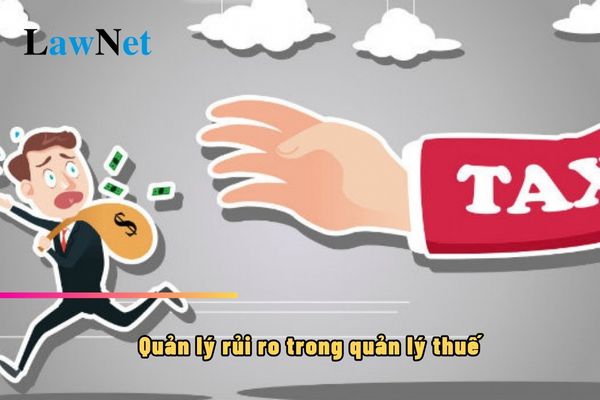What are measures for improving compliance levels with tax laws of taxpayers in Vietnam?
What are measures for improving compliance levels with tax laws of taxpayers in Vietnam?
Pursuant to Article 14 of Circular 31/2021/TT-BTC, the following measures are necessary to improve tax compliance among taxpayers:
Measure 1 Based on the tax compliance evaluation results stipulated in Article 10 of this Circular, the tax authority analyzes the nature of behavior and the scale of each tax compliance level of taxpayers, and develops a tax compliance improvement plan with appropriate measures for each compliance issue as follows:
For high compliance cases: Include them in the consideration list for commendation and reward selection for taxpayers complying with tax laws.
Measure 2 For cases requiring improved compliance:
- Coordinate with relevant agencies, organizations, and tax agents to implement supportive measures to help taxpayers perform tax procedures; organize programs to interact with taxpayers, dialogue conferences, workshops, and training sessions to help taxpayers fulfill their tax obligations properly and sufficiently;
- Study policy amendments, simplify administrative procedures, implement supporting measures, and apply information technology to facilitate tax declaration and payment, saving time and compliance costs for taxpayers;
- Classify risks and apply tax management measures to taxpayer risk levels as stipulated in Articles 15, 16, 17, 18, 19, 20, 21, and 22 of Circular 31/2021/TT-BTC.

What are measures for improving compliance levels with tax laws of taxpayers in Vietnam? (Image from the Internet)
What are regulations on management of risks of taxpayers that are individuals in Vietnam?
Pursuant to Article 15 of Circular 31/2021/TT-BTC, management of risks of taxpayers that are individuals as follows:
Based on the list of individual taxpayers classified by risk levels in Article 13 of Circular 31/2021/TT-BTC, the tax authority applies appropriate tax management measures as prescribed.
- For business households and individual businesses
+ High risk: Apply one or a combination of the following measures:
* Review, inspect, and verify relevant information to determine the revenue and tax level of business households and individual businesses;
* Compile a list to inspect and survey to determine the revenue, tax level of business households and individual businesses, and the fulfillment of tax obligations by related organizations.
+ Medium risk: Randomly select and include in the list to survey the revenue of business households and individual businesses; continue to classify risks for the next assessment period;
+ Low risk: Archive the file, and classify the risk level for the next assessment period.
- For individuals with taxable personal income (excluding business households and individual businesses)
+ High risk: Select for inspection, verify in practice, and organize inspection and verification according to current regulations;
+ Medium and low risk: Archive the file, and classify the risk level for the next assessment period.
In cases where individuals have taxable personal income through income-paying organizations, control will be exercised through the analysis of risk indicators of these organizations.
- For individuals with income related to land and property attached to land
+ High risk: Analyze records, prepare a list to present to the head of the tax authority for approval of an inspection plan at the tax office, and conduct tax return inspections at the tax office according to current regulations for individuals and related organizations;
+ Medium and low risk: Archive the file, and classify the risk level for the next assessment period.
What are 8 risk management rules in tax administration in Vietnam?
Pursuant to Article 4 of Circular 31/2021/TT-BTC, the 8 risk management rules include:
Principle 1. Apply risk management to ensure the effectiveness and efficiency of tax administration; encourage and facilitate taxpayers to voluntarily comply with tax laws and tax administration regulations while promptly preventing, detecting, and addressing violations of tax laws and tax administration.
Principle 2. Risk management information is collected from both internal and external sources (including information from abroad) following legal regulations; managed centrally at the General Department of Taxation through an information technology application system and processed, shared, and provided to tax authorities at various levels, as well as other state management agencies, for tax administration purposes as prescribed by law.
Principle 3. The evaluation and classification of taxpayer tax compliance and risk levels are conducted automatically and periodically, using one or a combination of methods specified in this Circular based on legal provisions, tax administration procedures, operational measures, taxpayer segmentation, the criteria defined in this Circular, and the taxpayer database.
Principle 4. Based on the tax compliance evaluation results, taxpayer risk classification, information available on tax authority's management applications, violation indications, and other risk indicators provided at the decision time, tax authorities shall:
- Decide on inspection, audit, supervision, and apply suitable operational measures.
- Develop an overall compliance improvement plan suited to the tax authority's resources based on the behavior analysis, causes, and scale of each tax compliance level and risk level.
Principle 5. If the legal regulations, Circular provisions, and risk management guidelines have been properly followed, tax officials are exempt from personal liability according to the law.
Principle 6. If the risk management application fails or does not meet the risk management requirements as stipulated in this Circular, manual risk management will be implemented through the approval of a proposal or the issuance of a document signed by an authorized person to apply operational tax management measures according to the Law on Tax Administration and its guiding documents.
Principle 7. If there is a change in information leading to a change in the tax compliance evaluation results and taxpayer risk classification, and the risk management application cannot automatically adjust the compliance and risk levels, the evaluation result update will be performed manually by tax officials after receiving approval from authorized personnel.
Principle 8. The implementation results of operational measures corresponding to the risk classification must be accurately and fully updated into the tax authority's management applications or the risk management application for each specific case, to serve the completion and evaluation of tax compliance and taxpayer risk classification in the next period.

